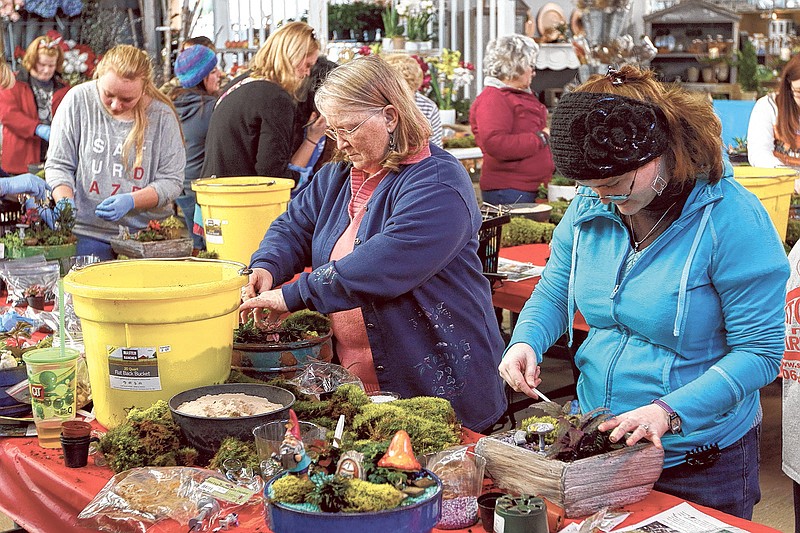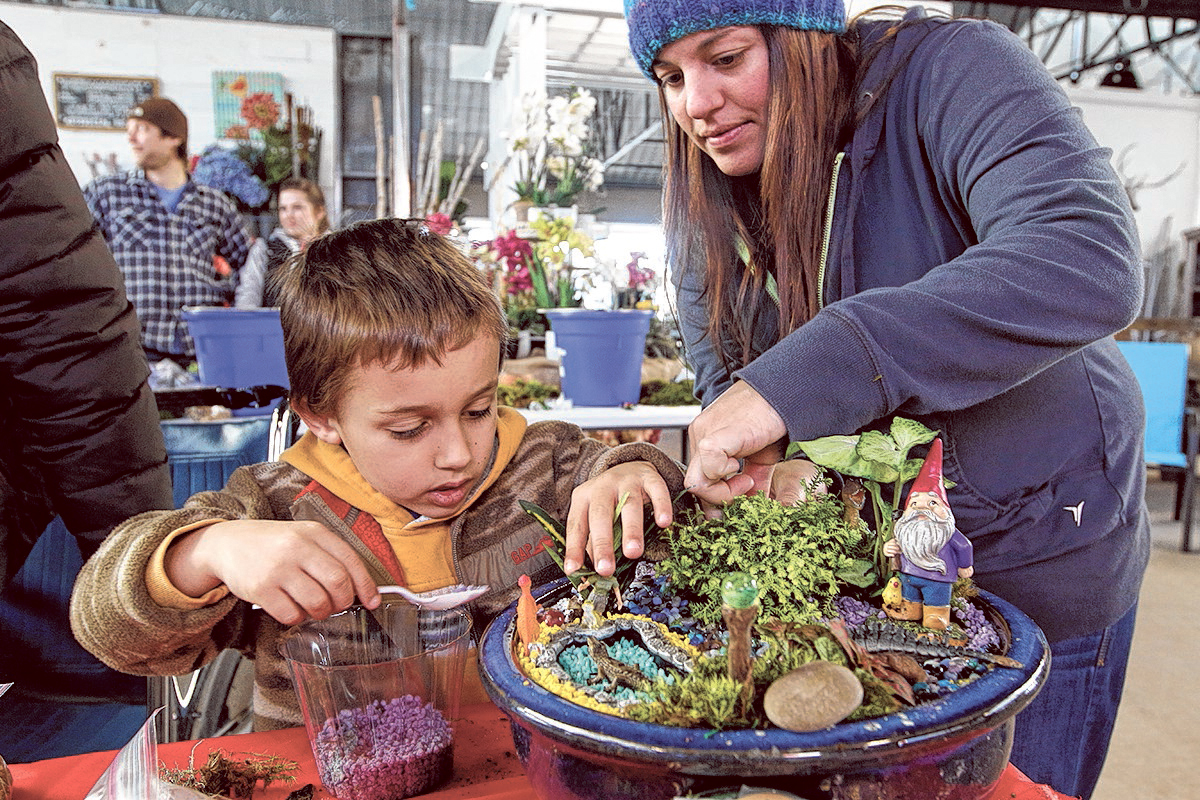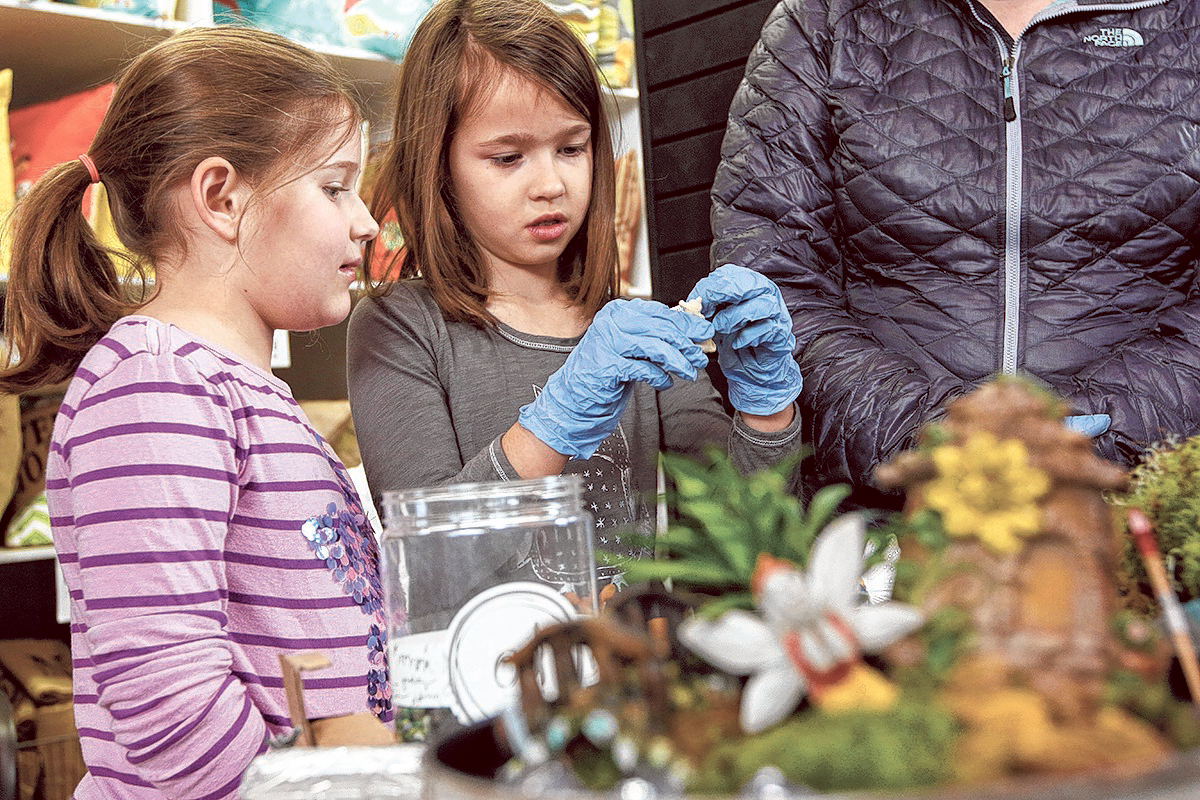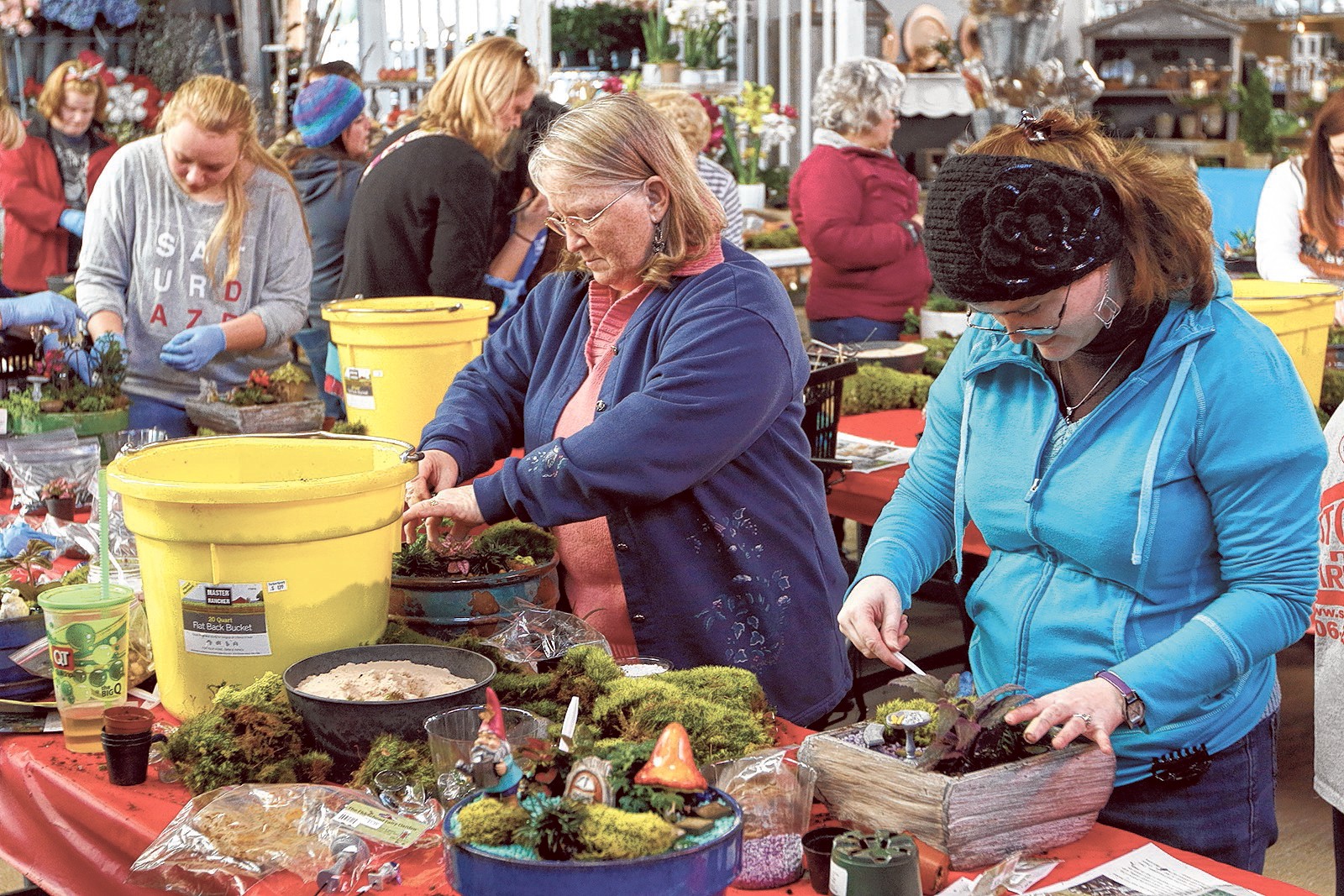Trenton Sticher may just be 5, but he knows his way around a garden, having helped tend his family's backyard vegetable garden each summer.
But he was introduced to indoor gardening last Saturday when his mom brought him to a miniature garden workshop at The Barn Nursery.
Miniature gardens -- potted arrangements of houseplants -- is a name used interchangeably with fairy gardens and adventure gardens. Mini gardens differ from terrariums, explains Donna Dent of The Barn Nursery, in that terrariums are normally inside glass containers, enclosed at the top, while miniature gardens are not enclosed in glass, are uncovered and use a variety of containers.
IF YOU GO
* What: Miniature Garden Workshop.* Where: The Barn Nursery, 1801 E. 24th Street Place.* When: 1 p.m. Saturday, March 7; one of several workshops offered during The Barn Nursery's 25th anniversary open house.* Fee: $35, includes materials.* To register: 423-698-2276.
Think of a miniature garden as the spunkier, less-formal cousin of English dish gardens, those elegant tabletop arrangements of plants that are favorites for extending funeral condolences.
A miniature garden accessorized with tiny houses, lawn furniture, beach scenes, tea parties, fairies and other girly themes are commonly referred to as fairy gardens. Adventure gardens -- more manly designs representing boys' interests -- might hold plastic dinosaurs roaming among potted greenery, pirates, gnomes or any assortment of animals ranging from dogs to meerkats to unicorns.
During this season when cold temperatures keep kids indoors, building a miniature garden is educational while kids just think they're having fun, suggests Dent, the Barn Nursery designer who led the sold-out workshop.
"Trenton loves dinosaurs, so he brought some with him. He picked out the plants, an alligator and pool with some different colored rocks," says Jessica Sticher, Trenton's mother. "It's a good project for indoor winter months because it allows children to have a focused, creative project to do. Then they can continue to water it and keep it up afterward. Trenton's still playing with his, moving dinosaurs around."
Here are six simple steps to make a miniature garden at home, with tips from Dent.
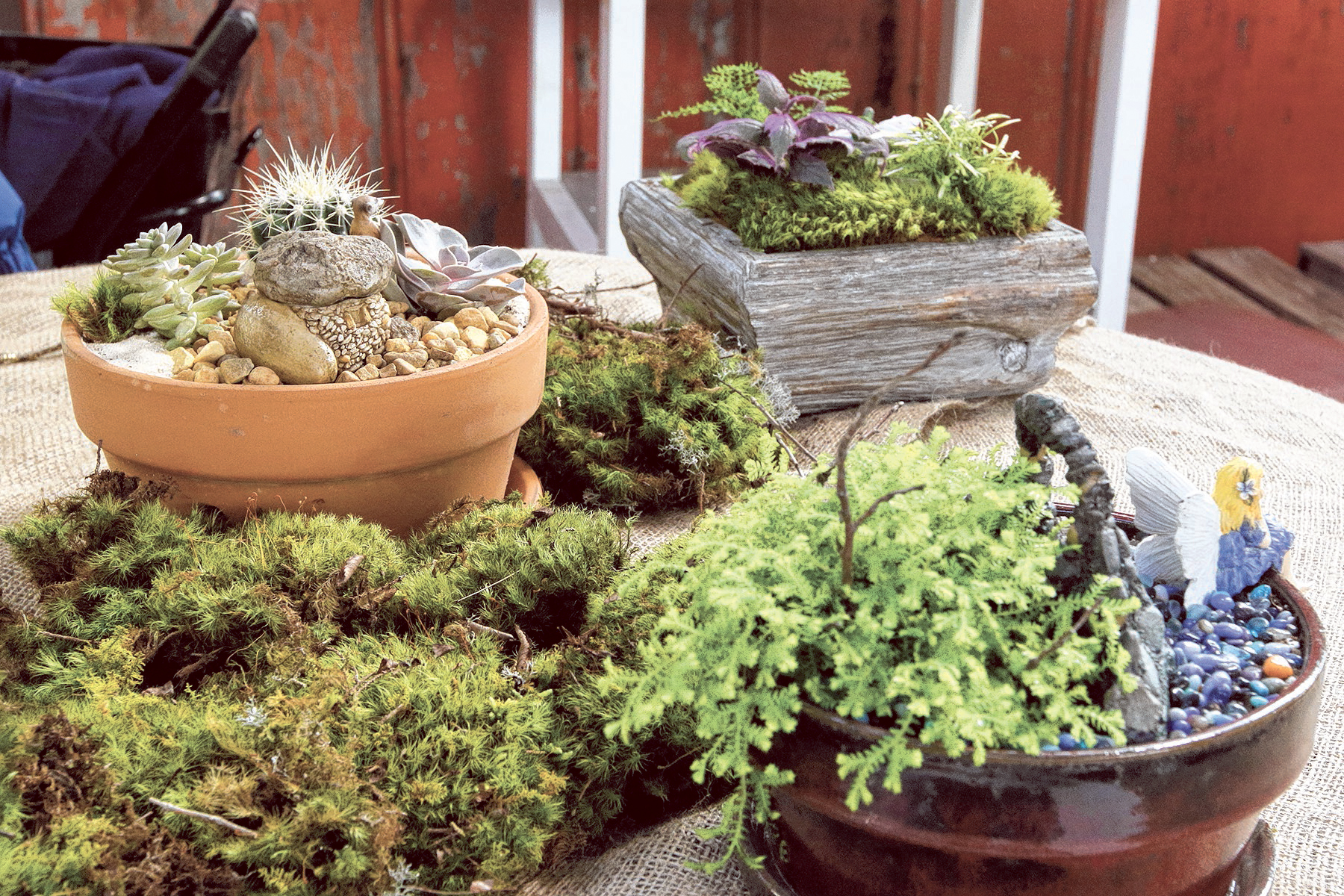 These miniature gardens made by Donna Dent show various concepts that can be incorporated into garden designs. At left is a succulent fairy garden in a terra cotta pot. It's easy-care and requires little watering, making it a good choice for children just starting to garden. The aged barnwood container, right rear, holds a lush fairy garden combining purple passion plants and ferns. Miniature gardens can also be created to complement home decor colors, such as the moss, glass stone and glazed blue pot, right front.
These miniature gardens made by Donna Dent show various concepts that can be incorporated into garden designs. At left is a succulent fairy garden in a terra cotta pot. It's easy-care and requires little watering, making it a good choice for children just starting to garden. The aged barnwood container, right rear, holds a lush fairy garden combining purple passion plants and ferns. Miniature gardens can also be created to complement home decor colors, such as the moss, glass stone and glazed blue pot, right front.1. Choose a shallow container that is wider than it is deep.
"I've seen them in everything from a bird bath to a frying pan," says Dent.
2. Pour a layer of pea gravel across the bottom of the container, 1/4 inch to 1/2 inch in thickness, for drainage.
3. Add a layer of horticultural charcoal, also 1/4- to 1/2-inch thick, which will act as a filter layer. This is especially important if the container doesn't drain well.
4. Fill the container with potting soil up to 1/2 inch from the top of the pot.
5. Choose houseplants and a theme, if desired, for the garden. Three plants is a good number. Choose plants with different leaf textures and colors to enhance visual interest.
Bonsai trees are a favorite in fairy gardens because they lend the illusion of age. Pair them with a mini ficus, Aralia or mini schefflera.
Dent suggests pet owners consult with a garden professional to ensure their selections are non-poisonous.
Fill around the plants with small rocks, sticks or moss before topping with themed items. Small colored beads can represent a stream or other water feature.
"Think of this as a miniature landscape for a yard," describes Dent. "Use plants that require (similar) care; for example, succulents with cactus, or ferns with ivy and mini houseplants. It's a wonderful opportunity to teach gardening, and is fun for children because they get to express their creativity."
6. When finished, place the garden in good, moderate light, away from heating vents and busy doorways.
"Lightly water every five to seven days," says Dent. "Soil should be slightly dry to the touch; most plants prefer to be moist but never soggy. You don't want water to pool in the bottom because it encourages growth of fungus and bacteria."
Prune plants back if they start to overgrow the container.
Dent says Pixie Plants or a 2- to 3-inch succulent average $3.99 apiece at The Barn. Glass beads start at $3 for a small package and can range up to $15. But you can save money on the project by recycling containers already at home, and using moss, small rocks or ivy found on your property.
Contact Susan Pierce at spierce@timesfreepress.com or 423-757-6284.
